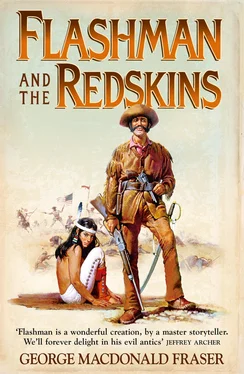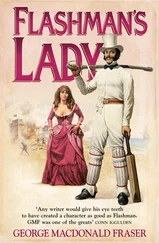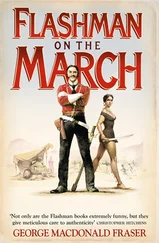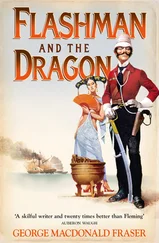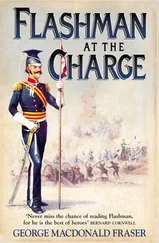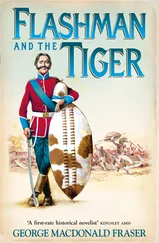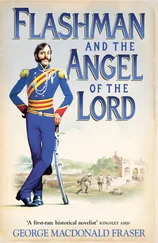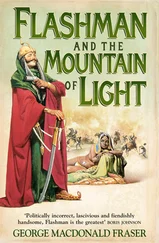When Hughes axed Flashman from Tom Brown’s Schooldays , brutally and suddenly (on page 170, if I remember rightly), it seemed a pretty callous act to abandon him with all his sins upon him, just at the stage of adolescence when a young fellow needs all the help and understanding he can get. So I adopted him, not from any charitable motives, but because I realised that there was good stuff in the lad, and that with proper care and guidance something could be made out of him.
And I have to say that with all his faults (what am I saying, because of his faults) young Flashy has justified the faith I showed in him. Over the years he and I have gone through several campaigns and assorted adventures, and I can say unhesitatingly that coward, scoundrel, toady, lecher and dissembler though he may be, he is a good man to go into the jungle with.
George MacDonald Fraser
Dedication Contents Cover Title Page Copyright How Did I Get the Idea of Flashman ? Dedication Explanatory Note Maps Introduction The Forty-Niner Chapter 1 Chapter 2 Chapter 3 Chapter 4 Chapter 5 Chapter 6 Chapter 7 Chapter 8 Chapter 9 Chapter 10 Chapter 11 Chapter 12 Chapter 13 Chapter 14 The Seventy-Sixer Chapter 15 Chapter 16 Chapter 17 Chapter 18 Chapter 19 Chapter 20 Chapter 21 Appendix I Appendix II Footnotes Notes About the Author The FLASHMAN Papers: In chronological order The FLASHMAN Papers: In order of publication Also by George MacDonald Fraser About the Publisher
For
Icimanipi-Wihopawin
‘Travels-Beautiful-Woman’
from Bent’s and the Santa Fe Trail
to the Black Hills
Contents
Cover
Title Page
Copyright
How Did I Get the Idea of Flashman ?
Dedication
Explanatory Note
Maps
Introduction
The Forty-Niner
Chapter 1
Chapter 2
Chapter 3
Chapter 4
Chapter 5
Chapter 6
Chapter 7
Chapter 8
Chapter 9
Chapter 10
Chapter 11
Chapter 12
Chapter 13
Chapter 14
The Seventy-Sixer
Chapter 15
Chapter 16
Chapter 17
Chapter 18
Chapter 19
Chapter 20
Chapter 21
Appendix I
Appendix II
Footnotes
Notes
About the Author
The FLASHMAN Papers: In chronological order
The FLASHMAN Papers: In order of publication
Also by George MacDonald Fraser
About the Publisher
A singular feature of the Flashman Papers, the memoirs of the notorious bully of Tom Brown’s Schooldays , which were discovered in a Leicestershire saleroom in 1966, is that their author wrote them in self-contained instalments, describing his background and setting the scene anew each time. This has been of great assistance to me in editing the Papers entrusted to me by Mr Paget Morrison of Durban, Flashman’s closest legitimate relative; it has meant that as I opened each new packet of manuscript I could expect the contents to be a complete and self-explanatory book, needing only a brief preface and foot-notes. Six volumes have followed this pattern.
The seventh volume has proved to be an exception; it follows chronologically (to the very minute) on to the third packet, fn1with only the briefest preamble by its aged author. I have therefore felt it necessary to append a résumé of the third packet at the end of this note, so that new readers will understand the events leading up to Flashman’s seventh adventure.
It was obvious from the early Papers that Flashman, in the intervals of his distinguished and scandalous service in the British Army, visited America more than once; this seventh volume is his Western odyssey. I believe it is unique. Others may have taken part in both the ’49 gold rush and the Battle of the Little Bighorn, but they have not left records of these events, nor did they have Flashman’s close, if reluctant, acquaintance with three of the most famous Indian chiefs, as well as with leading American soldiers, frontiersmen, and statesmen of the time, of whom he has left vivid and, it may be, revealing portraits.
As with his previous memoirs, I believe his truthfulness is not in question. As students of those volumes will be aware, his personal character was deplorable, his conduct abandoned, and his talent for mischief apparently inexhaustible; indeed, his one redeeming feature was his unblushing veracity as a memorialist. As I hope the footnotes and appendices will show, I have been at pains to check his statements wherever possible, and I am indebted to librarians, custodians, and many members of the great and kindly American public at Santa Fe, Albuquerque, Minneapolis, Fort Laramie, the Custer battlefield, the Yellowstone and Arkansas rivers, and Bent’s Fort.
G.M.F.
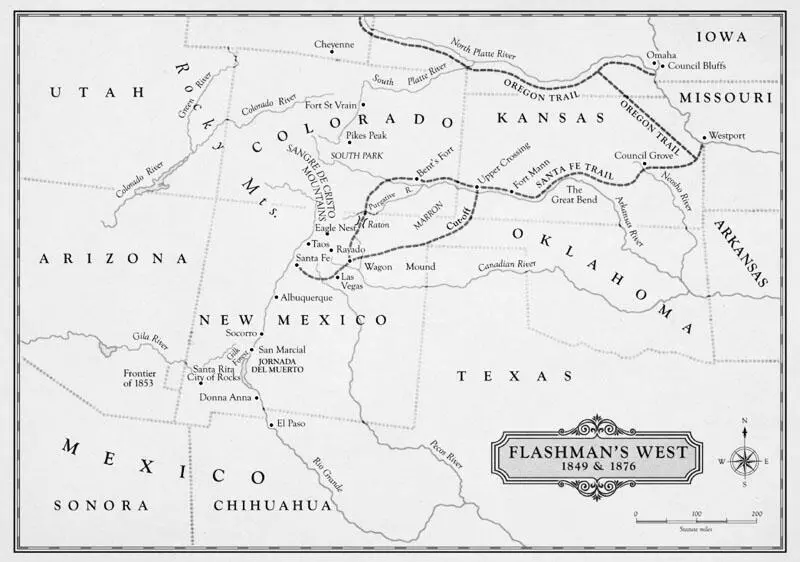
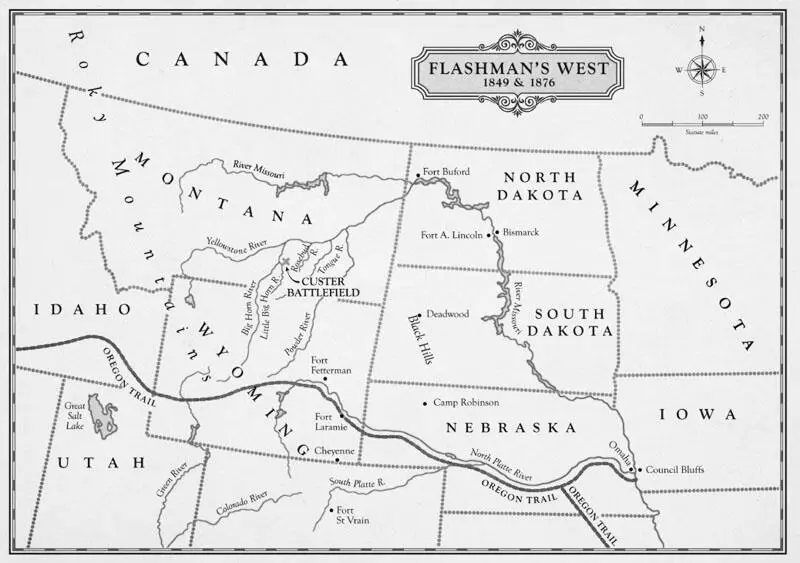
In May, 1848, Flashman was forced to flee England after a card scandal, and sailed for Africa on the Balliol College , a ship owned by his father-in-law, John Morrison of Paisley, and commanded by Captain John Charity Spring, MA, late Fellow of Oriel College. Only too late did Flashman discover that the ship was an illegal slave-trader and her captain, despite his academic antecedents, a homicidal eccentric. After taking aboard a cargo of slaves in Dahomey, the Balliol College crossed the Atlantic, but was captured by the American Navy; Flashman managed to escape in New Orleans, and took temporary refuge in a bawdy-house whose proprietress, a susceptible English matron named Susan Willinck, was captivated by his picaresque charm.
Thereafter Flashman spent several eventful months in the Mississippi valley, frequently in headlong flight. For a time he impersonated (among many other figures) a Royal Navy officer; he was also a reluctant agent of the Underground Railroad which smuggled escaped slaves to Canada, but unfortunately the fugitive entrusted to his care was recognised by a vindictive planter named Omohundro, and Flashman abandoned his charge and beat a hasty retreat over the rail of a steamboat. He next obtained employment as a plantation slave-driver, but lost his position on being found in compromising circumstances with his master’s wife. He subsequently stole a beautiful octoroon slave, Cassy, sold her under a false name, assisted her subsequent evasion, and with the proceeds of the sale fled with her across the ice-floes of the Ohio River, pursued by slave-catchers who shot him in the buttock; however, he succeeded in effecting his escape, and Cassy’s, with the timely assistance of the then Congressman Abraham Lincoln.
With charges of slave-trading, slave-stealing, false pretences, and even murder hanging over his head, Flashman was now anxious to return to England. Instead, mischance brought him again to New Orleans, and he was driven in desperation to seek the help of his former commander, Captain Spring, who had been cleared of slave-trading by a corrupt American court and was about to sail. Flashman, who throughout his misfortunes had clung tenaciously to certain documents from the Balliol College – documents proving the ship’s slaving activities with which Flashman had hoped to blackmail his detested father-in-law – now offered them as the price of his passage home; Captain Spring, his habitual malevolence tempered by his eagerness to secure papers so dangerous to himself, agreed.
Читать дальше
